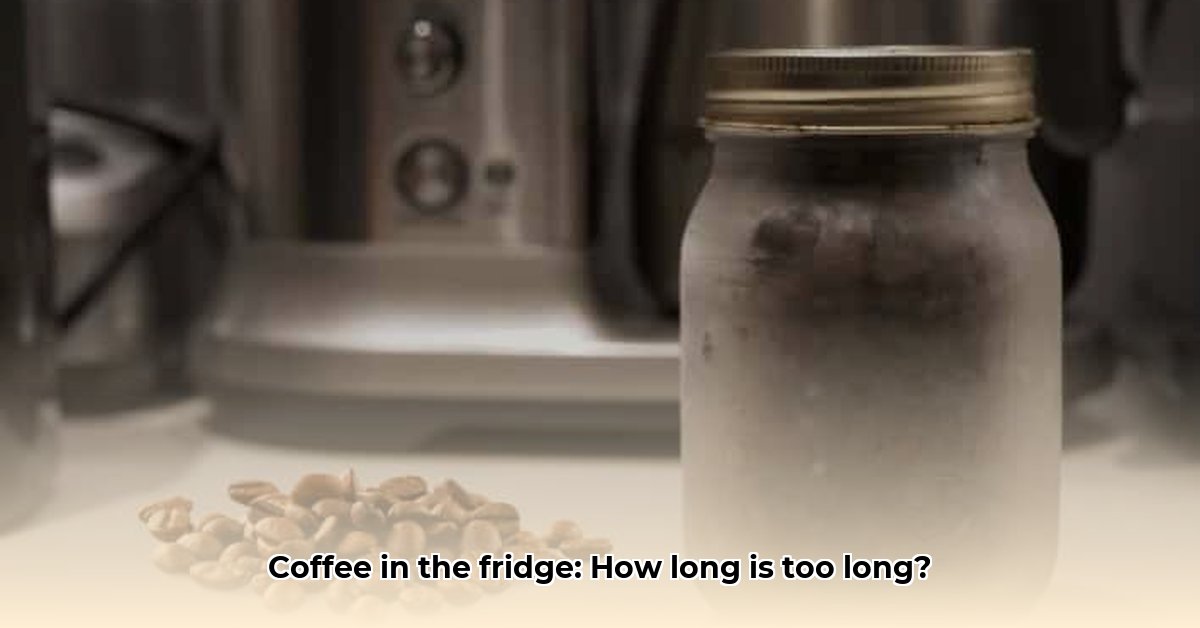Stop wasting coffee! This guide reveals the secrets to maximizing your coffee’s freshness, from the moment you brew it to the last delicious drop. We’ll cover everything from how long different types of coffee last to step-by-step storage instructions. Get ready to enjoy fresher, more flavorful coffee every time.
Coffee’s Fridge Lifespan: A Quick Guide
Need an answer fast? This table summarizes how long different coffee types typically stay fresh in the fridge:
| Coffee Type | Best Flavor By | Safe to Drink Until (Likely) |
|---|---|---|
| Brewed Black Coffee | 3-4 days | Up to 7 days |
| Coffee with Milk/Creamer | 1-2 days max | Up to 2 days |
| Cold Brew Concentrate | Up to 2 weeks | Up to 2 weeks |
| Coffee Beans | Don’t Refrigerate! | Don’t Refrigerate! |
Brewed Coffee Storage: The Science of Freshness
Black Coffee: Battling Oxidation
Brewed black coffee is at its peak flavor within a day of brewing. After that, oxidation begins to degrade its complex flavor profile. Storing it in the refrigerator in an airtight container can help slow this process, preserving decent flavor for 3-4 days, possibly up to a week. Some research suggests that the brewing method itself may influence how quickly coffee oxidizes, but more studies are needed.
Coffee with Milk/Creamer: The Dairy Dilemma
Adding milk or creamer introduces an additional spoilage factor: bacteria. This significantly shortens the lifespan of your coffee. Consume coffee with milk within 1-2 days and always refrigerate it within two hours of adding dairy.
Cold Brew Concentrate: A Freshness Champion
Cold brew, due to its lower brewing temperature and higher concentration, often boasts a longer shelf life. It can maintain its flavor for up to two weeks in the refrigerator. The lower temperature may inhibit bacterial growth and slow oxidation, contributing to its extended freshness.
Coffee Beans: Room Temperature Royalty
Never refrigerate coffee beans. The fridge’s humidity can cause condensation, leading to stale, flavorless beans and potential mold growth. Store beans in an airtight, opaque container at room temperature in a cool, dark, and dry location.
Step-by-Step: Refrigerating Brewed Coffee Like a Pro
-
Choose the Right Container: An airtight container made of glass or stainless steel is ideal. These materials are less likely to absorb odors than plastic.
-
Transfer Swiftly: Once cooled, pour the coffee into the container quickly, minimizing air exposure. Seal tightly.
-
Refrigerator Strategy: Avoid the temperature fluctuations of the refrigerator door. Place the coffee container in a stable, cool spot within the main compartment.
Spoilage Signs: When to Toss Your Coffee
Trust your senses. Look for visible mold (an immediate discard signal). Does it smell sour, musty, or just “off”? Is the taste unpleasant? If so, it’s better to brew a fresh batch.
Beyond the Fridge: Freezing & Reheating
Freezing Your Brew
Freezing coffee is an excellent long-term storage solution. Pour cooled coffee into ice cube trays, then transfer the frozen cubes to an airtight container or freezer bag. These are perfect for iced coffee. Some experts suggest using filtered water for your ice cubes to prevent off-flavors when thawing.
Reheating Coffee
Reheat gently. Microwaving in short bursts or warming on the stovetop over low heat will preserve more flavor than boiling.
Coffee Bean Storage: A Deep Dive
Whole bean storage is crucial for maximizing freshness. Remember, airtight, opaque, and room temperature are the key principles. Here’s a more detailed breakdown:
-
The Right Container: Choose an airtight container made of glass, ceramic, or stainless steel to protect beans from light and air.
-
Portioning: Consider dividing your beans into smaller, airtight containers. Only open what you need to further limit air exposure to the remaining beans.
-
Location, Location, Location: Stash your beans in a cool, dark, and dry place like a pantry or cupboard. Avoid proximity to heat sources, strong-smelling foods, and direct sunlight.
Maximizing Freshness: From Bean to Cup
While these storage tips are valuable, remember that starting with freshly roasted beans is the foundation of a flavorful cup. Check roast dates when purchasing, and ideally, use beans within two weeks of roasting. Ongoing research suggests that factors such as bean variety and processing methods may also play a role in how long coffee maintains its freshness.
This guide provides current best practices for coffee storage based on available research. As scientific understanding evolves, these recommendations may be refined. Happy brewing!
- How to Stop Apps From Running in the Background to Boost Your - December 1, 2025
- How To Move Apps On Your Droid For Better Organization - November 30, 2025
- How to Move Apps on Android for Better Organization - November 29, 2025










